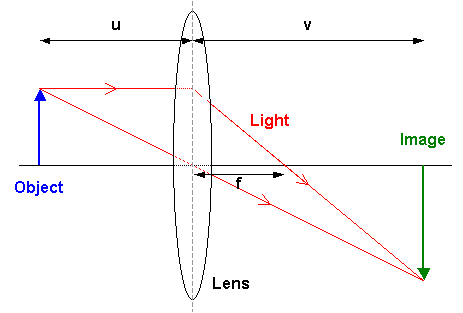Question #74b2b
1 Answer

We know the conjugate foci relation of lens as follows
#color(blue)(1/v-1/u=1/f)#
Where
Imposing sign convention
So the lens formula becomes
#color(green)(1/v-1/(-u)=1/f)#
#=>color(green)(1/v+1/u=1/f)#
Now let us consider that the distance between real object and real image be
#color(red)(1/(D-u)+1/u=1/f)#
This is a quadratic equation of
So
From this relation we can conclude that the minimum distance between real obejct and its real image formed by a converging lens is
The following graph supports the phenomenon discussed above.

